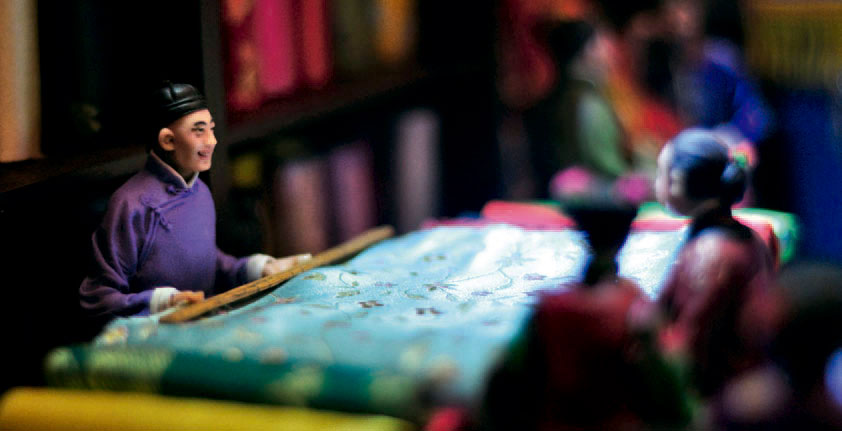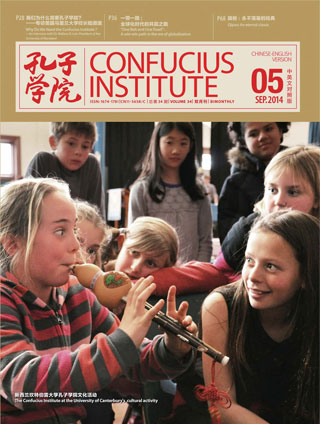When they pulled the long silk strands out of boiling water and weaved them into the most gorgeous fabrics in the world, the people living 2,100 years ago in the West Han Dynasty did not know that the fabric they held in their hands would bring together two previously unconnected parts of the world — the Orient and the West. Thanks to silk, people at the two ends of the Eurasian continent came to realize each other’s existence and began to find ways to reach one another.
The Silk Road, with its origin traced back to over 2,100 years ago, has left an everlasting and glorious chapter in world history as a route facilitating trade between Asia and Europe and the exchange of Eastern and Western cultures.
On September 7, 2013, after 2,100 years, Chinese President Xi Jinping delivered a historic speech at Nazarbayev University, Kazakhstan. For the first time, he proposed the strategic initiative of jointly building a new Silk Road economic belt, by advocating policy communication, interconnectivity of roads, free trade and currency circulation, and bringing people’s interests together. A month later, on October 3, when delivering a keynote speech to the Indonesian parliament, President Xi Jinping clearly stated that China is dedicated to enhancing communication and connectivity with ASEAN countries, and that China wishes to forge maritime partnerships and jointly build a 21st century maritime Silk Road.
The concept of “One Belt and One Road” — the new Silk Road economic belt and the 21st century maritime Silk ... — has attracted the attention of the international community and prompted positive responses from all nations. It has been praised as a farsighted strategic idea, a win-win path for peaceful development and a lofty but pragmatic undertaking.
A win-win path
The human civilization has developed through constant communication and mutual learning. In this connection, the Silk Road has served as an indispensable communication channel between Chinese and Western cultures, and has even led to the growth of the human civilization.
In 138 BC, Zhang Qian left Chang’an (Today’s Xi’an in Shaanxi Province) with his camel caravan to travel westwards into the desert. His mission ushered in a new era of communication between China and the rest of the world, and established a new path for international economic and cultural exchange.
The traditional Silk Road started from Chang’an (today’s Xi’an), an ancient capital of China, and ended in Rome in the Mediterranean via Central Asia, passing through Afghanistan, Iran, Iraq, Syria, etc. This road was also considered a route for cultural exchange connecting the east and west civilizations in ancient times.
“One Belt and One Road” is not only an opportunity for Chinese cities, but also a common undertaking for all the countries along its route.
Apart from the new Silk Road on land, there was also a maritime new Silk Road starting from China’s southeast coast, through the South China Sea, the Indian Ocean and the Persian Gulf, reaching Europe and East Africa. Such a developed network served as a maritime corridor to link the world’s civilizations. Its significance had gone beyond that of a trade route. It was, to an extent, a path of goodwill and friendship.
On June 22 of 2014, Princess Mayassa of Qatar tapped her gavel to announce that the new Silk Road project, jointly declared by China, Kazakhstan and Kyrgyzstan, had been entered onto the World Cultural Heritage List. The successful bid of “Silk Roads: Ro utes Network of Chang’an – Tianshan Corridor” for World Cultural Heritage List was the first of its kind. The Silk Road used to be an example of shared economic prosperity and cross cultural learning, a symbol of economic success and cultural exchange. The successful bid has again attracted the attention of the world to this road of cooperation and shared prosperity.
If you look at a world map, you’ll find that “One Belt and One Road” will represent the longest economic corridor in the world. It starts from China and threads through Central Asia, Southeast Asia, South Asia, West Asia and parts of Europe, serving as a bridge linking the Asia-Pacific economic circle and the European economic circle. It covers 4.4 billion people, accounting for 63% of the world population.

Shared opportunities
Linking ancient and modern times, the concept of the Silk Road economic belt and maritime Silk Roadwill again connect China with other countries, but it will bring a brand new concept to the old Silk Road, and inject new energy into Pan-Asian and Eurasian regional cooperation. Today, the meandering camel caravans have been replaced by highspeed trains, and the “treasure ships” with nine masts and twelve sails have been replaced by large container ships. However, the spirit of the Silk Road — mutual trust, mutual learning and mutual benefit — has remained unchanged throughout the centuries.
A new Silk Road calls for new thinking. “One Belt and One Road” goes through fourteen Chinese provinces, autonomous regions and municipalities, and many major cities stand along the route. Faced with new opportunities, these cities have begun to reposition themselves and open up more to the outside world. Xinjiang Uygur Autonomous Region “will serve as the pioneer and main driving force for the new Silk Road economic belt by building itself into a regional transportation hub, logistics center, financial center, cultural, scientific and education center as well as a medical services center.” Shaanxi Province “will be the destination of choice for industries from eastern China and other parts of the world, a transportation hub that will link the Eurasia land bridge and the maritime Silk Road, the largest logistic centerin the new Silk Road economic belt and a melting pot of diverse Asian and European cultures”. It will “modernize and network its infrastructure and focus on improving its integrated transportation system and energy channels”.

“One Belt and One Road” is not only an opportunity for Chinese cities, but also a common undertaking for all the countries along its route. Ana Palacio, former Vice President of the World Bank, said that the ancient Silk Road had become a byword for that which bridges civilizations, and the key to its success is to promote non-conflicting and non-antagonistic foreign policies for those involved. Dr. Magda Saleh, Director of the Center for Asian Studies at Cairo University, believed that the concept of “One Belt and One Road” and the Chinese Dream were complementary to each other. Anna Diamantopoulou, former Greek Minister of Education, proposed to launch a project named “City of Silk Road Culture”, whereby each year, a country along the route would organize cultural events, which would include cultural and technology exhibitions to promote economic cooperation, forming a long-term mechanism for peopleto- people exchange. Some European countries such as Spain have already shown strong interest in this proposal.
“One Belt and One Road” will represent the longest economic corridor in the world. It starts from China and threads through Central Asia, Southeast Asia, South Asia, West Asia and parts of Europe, serving as a bridge linking the Asia-Pacific economic circle and the European economic circle.
As can be seen on a world map, the new Silk Road economic belt links the economies of the Asia-Pacific Rim and Europe, and is thus regarded as “the longest and the most promising economic corridor in the world”. Currently, China is the largest trade partner, export market and major investor to many countries on the route. Over the past decade, China’s trade with these countries has onaverage risen by 19% annually, and China’s direct investment in these countries has increased by an average of 46% per year. Both rates of growth are higher than those of China itself in the same period.
“The history of the past 2,000 years has proved that, as long as we uphold solidarity and mutual trust, equality and mutual benefit, inclusiveness andmutual learning, cooperation and shared prosperity, countries of different ethnicities, faiths and cultural backgrounds can enjoy peaceful codevelopment.” Referring to the 21st century maritime Silk Road, President Xi Jinping emphasized that China is willing to enhance maritime cooperation with ASEAN countries. He stated that “China wants to promote maritime partnerships to jointly establish a 21st century maritime Silk Road and “to share opportunities and overcome challenges in cooperation with ASEAN countries in order to foster co-development and co-prosperity”. History is always hinting at the future, and the Chinese dream has always been linked with the dreams of peoples of the world. There is much to be expected from “One Belt and One Road”, which will continue to promote the spirit of the ancient Silk Road.

Read More:
Published in Confucius Institute Magazine
Number 34. Volume V. September 2014.



You need to be a member of Iconada.tv 愛墾 網 to add comments!
Join Iconada.tv 愛墾 網